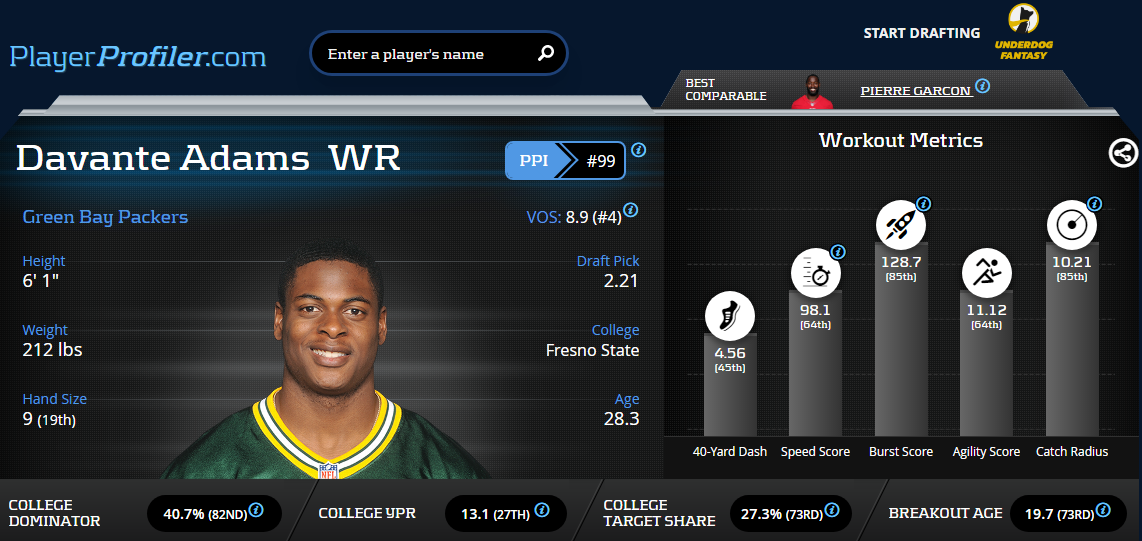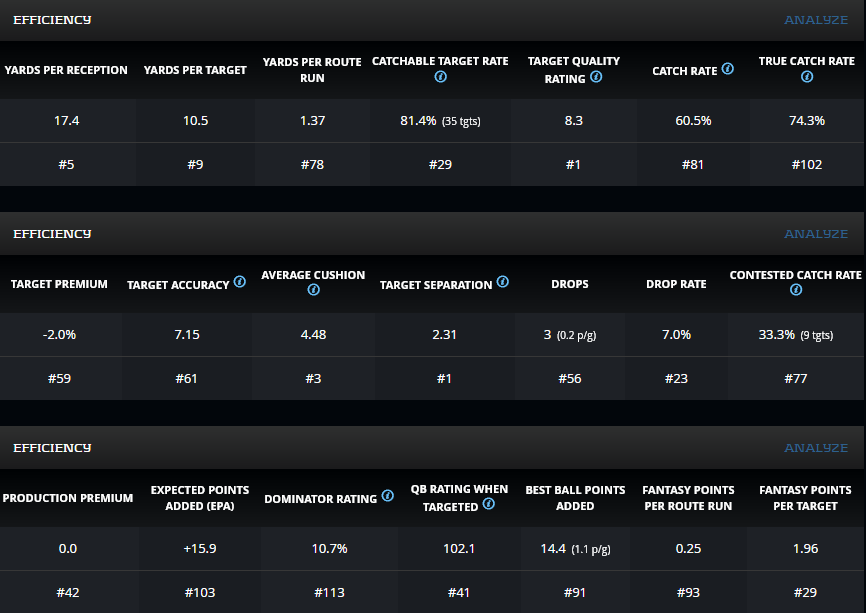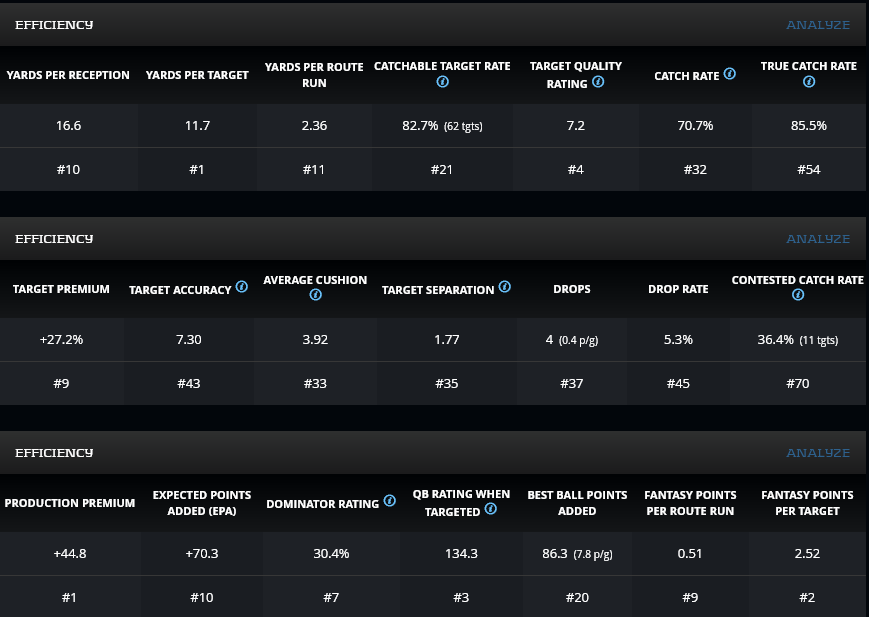Route running is a major part of being a successful position player in the NFL. Everyone always goes nuts for a player’s 40-yard Dash time, but running precise routes is more indicative of a long career. There are many metrics that go into route running, but today we are going to look at the distances between player and defender, to see how that correlates to how well a receiver plays. Come on into our Meet the Metric series here in the Underworld. In this edition, we shall meet the Target Separation metric.
What is it?
Target Separation is known as a receiver’s average yards of separation from his assigned defender at the moment the pass arrives. This metric is helpful to show which receivers can get open against their defenders, and thus have more opportunity to be targeted. A great example of this would be Packers WR Davante Adams.
Coming into the league, Adams ran a 4.56 (45th-percentile among qualified wide receivers) 40-yard Dash, hardly setting the world on fire. He used his route running to become an elite receiver, as evidenced by his 2.13 (No. 9) Target Separation score. His ability to put space in between himself and a defender, as well as having a supremely accurate QB, is what makes him a good receiver. Though he only had an 8.8 (No. 78) Average Target Distance mark in 2019, he did draw 20 (No. 23) Deep Targets, and his 1,308 (No. 13) Air Yards were good for a 39.2-percent (No. 5) Air Yards Share. All this is to show that he isn’t just separating on slants. Depth of target is so important in determining Target Separation being that slants are much easier to separate on than deeper routes.
Creating Space
When we look at the wide receiver rankings in Target Separation from 2020, there is a former first-round pick that hasn’t yet lived up to his full potential.
Henry Ruggs ranked No. 1 among qualified receivers in his 2020 rookie season. That certainly can be attributed to his 4.27 (100th-percentile) 40-yard Dash speed. Straight-line speed isn’t the only factor, of course. There are several other things to look at with Ruggs to see why he wasn’t as big a fantasy producer as he should have been.
In his rookie season, Ruggs had a 7.15 (No. 61) Target Accuracy mark, along with a 13.0-percent (No. 197) Target Rate. His 17.4 (No. 2) Average Target Distance shows that he was clearly used as the deep threat in the Raiders offense. Good accuracy on Deep Balls is critical for the success rate of the kind of receiver that Ruggs is. An upgrade in targets and more consistency of accurate passes on both short and deep routes from Derek Carr will hopefully pay dividends for Ruggs in 2021 and beyond.
A New Hope
A player who has changed teams this year that could be in line for an increase in production is Will Fuller. While a member of the Texans in 2020, Fuller had a 7.30 (No. 43) Target Accuracy Rating. His +27.2-percent (No. 2) Target Premium was amazing considering the supporting cast he had around him.
Fuller looks to become the WR1 in Miami, where he will link up with Tua Tagovailoa and his 7.9 (No. 2) Accuracy Rating. His 1.77 (No. 35) Target Separation will be improved upon in a better offense for his skill set. It should be exciting to see how he does in his new home.






